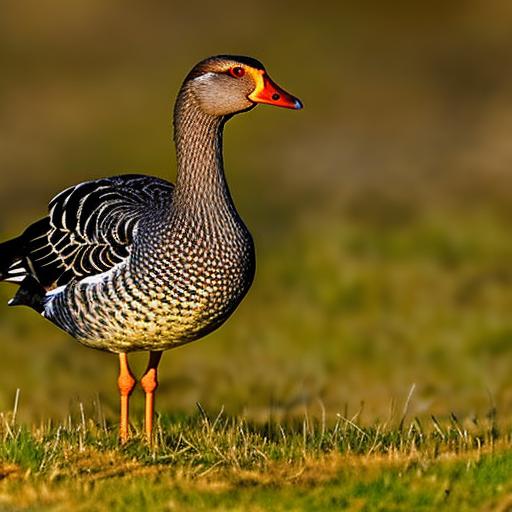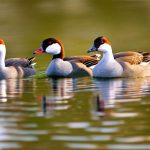Geese have become an increasing problem in urban areas, causing damage to property and posing potential health risks. As their populations continue to grow, finding effective methods to keep geese away has become a priority for many property owners. One method that has shown promise is the use of flashing lights as a geese deterrent. In this article, we will explore the benefits of using flashing lights, the different types available, how to install and use them, best practices for their use, and other methods for keeping geese away.
Key Takeaways
- Flashing lights are an effective way to deter geese from an area.
- Understanding geese behavior is important in developing a successful deterrent strategy.
- Flashing lights offer benefits such as low cost and low maintenance.
- Different types of flashing lights have varying levels of effectiveness.
- Proper installation and maintenance of flashing lights is crucial for their effectiveness.
Understanding Geese Behavior
To effectively keep geese away, it is important to understand their behavior. Geese are social animals that often gather in large flocks. They are attracted to open spaces with access to water and food sources. While they may seem harmless, geese can become aggressive when they feel threatened or when protecting their nests. Their droppings can also pose health risks as they can contain bacteria and parasites.
Benefits of Using Flashing Lights
Flashing lights have proven to be an effective deterrent for geese. The sudden bursts of light mimic the presence of predators, causing the geese to feel threatened and move away from the area. Unlike other methods such as physical barriers or sound deterrents, flashing lights do not harm the geese or disrupt their natural behavior. They simply create an environment that is less desirable for the geese to inhabit.
Types of Flashing Lights
There are several types of flashing lights available for use as geese deterrents. One common type is the solar-powered LED light. These lights are easy to install and require no external power source. They charge during the day and automatically turn on at dusk, creating a flashing effect that is effective in keeping geese away. Another type is the motion-activated light, which only turns on when it detects movement. This type of light is particularly useful in areas where geese are known to gather, as it provides a sudden burst of light when they approach.
How to Install and Use Flashing Lights
Installing and using flashing lights as a geese deterrent is relatively simple. First, determine the areas where geese are most likely to gather, such as near bodies of water or open fields. Then, choose the type of flashing light that best suits your needs. Solar-powered LED lights can be easily installed by placing them in the ground or attaching them to structures using the provided stakes or brackets. Motion-activated lights can be mounted on poles or structures at a height that is visible to the geese.
Best Practices for Using Flashing Lights

To maximize the effectiveness of flashing lights as a geese deterrent, it is important to follow some best practices. First, ensure that the lights are placed in areas where they are clearly visible to the geese. This may require adjusting the height or angle of the lights. Second, maintain consistency in the use of the lights. Geese are creatures of habit and will become accustomed to the presence of the lights if they are not used consistently. Finally, regularly inspect and maintain the lights to ensure they are functioning properly.
How to Maintain and Troubleshoot Your Flashing Lights
Maintaining and troubleshooting your flashing lights is essential to their effectiveness as a geese deterrent. Regularly check the lights to ensure they are clean and free from debris that may obstruct their visibility. If the lights are not turning on or flashing properly, check the batteries or solar panels for any issues. If necessary, replace batteries or clean solar panels to restore proper function. If problems persist, consult the manufacturer’s instructions or contact customer support for further assistance.
Other Methods for Keeping Geese Away
While flashing lights have proven to be effective in keeping geese away, there are other methods that can be used in conjunction with or as an alternative to flashing lights. Physical barriers such as fences or netting can be installed to prevent geese from accessing certain areas. Sound deterrents, such as ultrasonic devices or noise-making devices, can also be effective in deterring geese. However, it is important to consider the pros and cons of each method and choose the one that best suits your needs and the specific circumstances of your property.
Importance of Humane Geese Control Methods
When dealing with geese or any other wildlife, it is important to prioritize humane control methods. Inhumane methods, such as trapping or harming the geese, not only cause unnecessary suffering but may also be illegal in many areas. Humane methods, such as flashing lights, allow property owners to effectively deter geese without causing harm or disrupting their natural behavior. By using humane control methods, we can coexist with wildlife in a way that is respectful and sustainable.
Flashing lights have proven to be an effective and humane method for keeping geese away from urban areas. By understanding geese behavior, choosing the right type of flashing light, properly installing and using them, and following best practices for their maintenance and use, property owners can successfully deter geese from their properties. In combination with other methods such as physical barriers or sound deterrents, flashing lights can provide a comprehensive approach to geese control. By prioritizing humane control methods, we can create a safe and harmonious environment for both humans and wildlife.
If you’re looking for effective ways to keep geese away from your property, you might be interested in an article on Poultry Wizard that discusses the use of flashing lights as a deterrent. Flashing lights have been found to be an effective method for keeping geese at bay, as they disrupt their natural patterns and make them feel uneasy. To learn more about this technique and other helpful tips for caring for geese, check out the article here.
Meet Walter, the feathered-friend fanatic of Florida! Nestled in the sunshine state, Walter struts through life with his feathered companions, clucking his way to happiness. With a coop that’s fancier than a five-star hotel, he’s the Don Juan of the chicken world. When he’s not teaching his hens to do the cha-cha, you’ll find him in a heated debate with his prized rooster, Sir Clucks-a-Lot. Walter’s poultry passion is no yolk; he’s the sunny-side-up guy you never knew you needed in your flock of friends!







